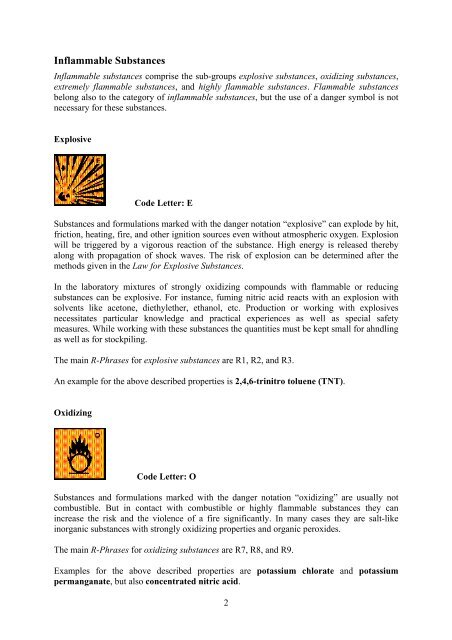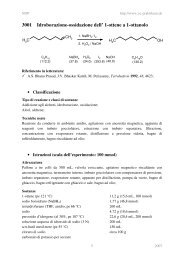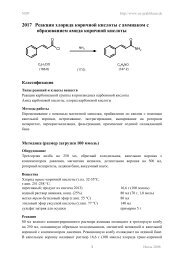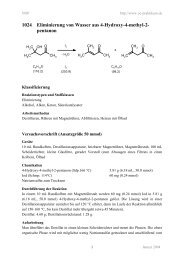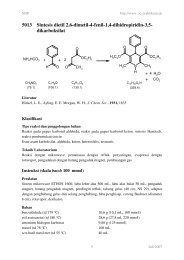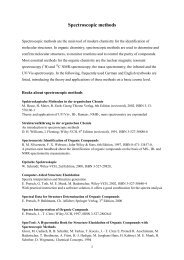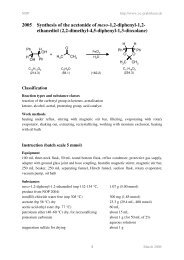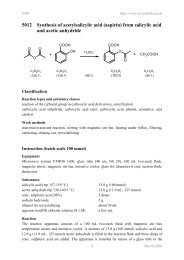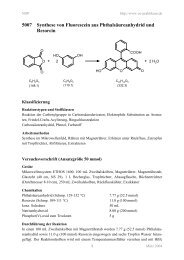Danger Symbols - kriemhild
Danger Symbols - kriemhild
Danger Symbols - kriemhild
Create successful ePaper yourself
Turn your PDF publications into a flip-book with our unique Google optimized e-Paper software.
Inflammable Substances<br />
Inflammable substances comprise the sub-groups explosive substances, oxidizing substances,<br />
extremely flammable substances, and highly flammable substances. Flammable substances<br />
belong also to the category of inflammable substances, but the use of a danger symbol is not<br />
necessary for these substances.<br />
Explosive<br />
Code Letter: E<br />
Substances and formulations marked with the danger notation “explosive” can explode by hit,<br />
friction, heating, fire, and other ignition sources even without atmospheric oxygen. Explosion<br />
will be triggered by a vigorous reaction of the substance. High energy is released thereby<br />
along with propagation of shock waves. The risk of explosion can be determined after the<br />
methods given in the Law for Explosive Substances.<br />
In the laboratory mixtures of strongly oxidizing compounds with flammable or reducing<br />
substances can be explosive. For instance, fuming nitric acid reacts with an explosion with<br />
solvents like acetone, diethylether, ethanol, etc. Production or working with explosives<br />
necessitates particular knowledge and practical experiences as well as special safety<br />
measures. While working with these substances the quantities must be kept small for ahndling<br />
as well as for stockpiling.<br />
The main R-Phrases for explosive substances are R1, R2, and R3.<br />
An example for the above described properties is 2,4,6-trinitro toluene (TNT).<br />
Oxidizing<br />
Code Letter: O<br />
Substances and formulations marked with the danger notation “oxidizing” are usually not<br />
combustible. But in contact with combustible or highly flammable substances they can<br />
increase the risk and the violence of a fire significantly. In many cases they are salt-like<br />
inorganic substances with strongly oxidizing properties and organic peroxides.<br />
The main R-Phrases for oxidizing substances are R7, R8, and R9.<br />
Examples for the above described properties are potassium chlorate and potassium<br />
permanganate, but also concentrated nitric acid.<br />
2


